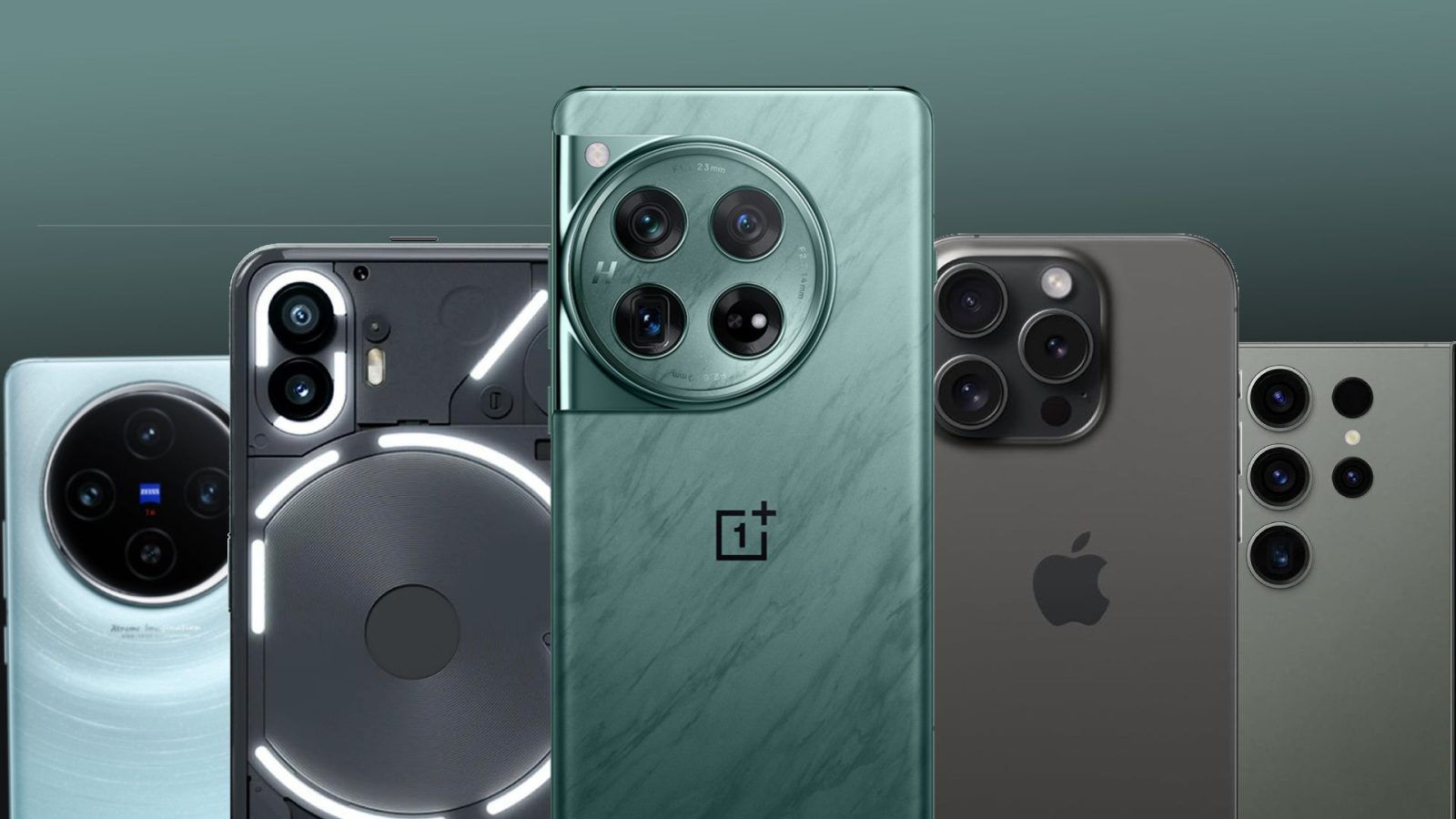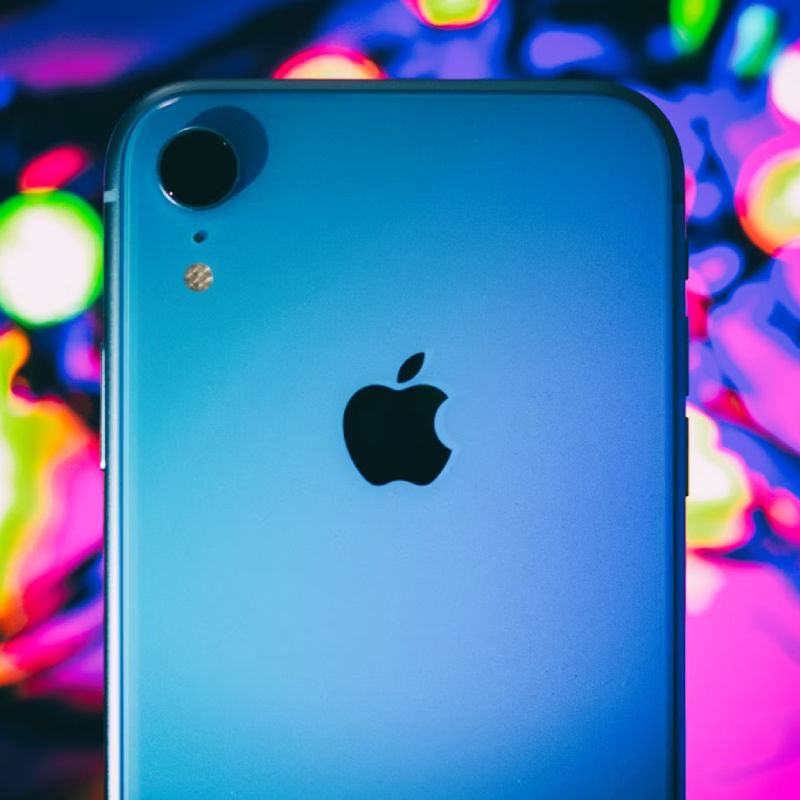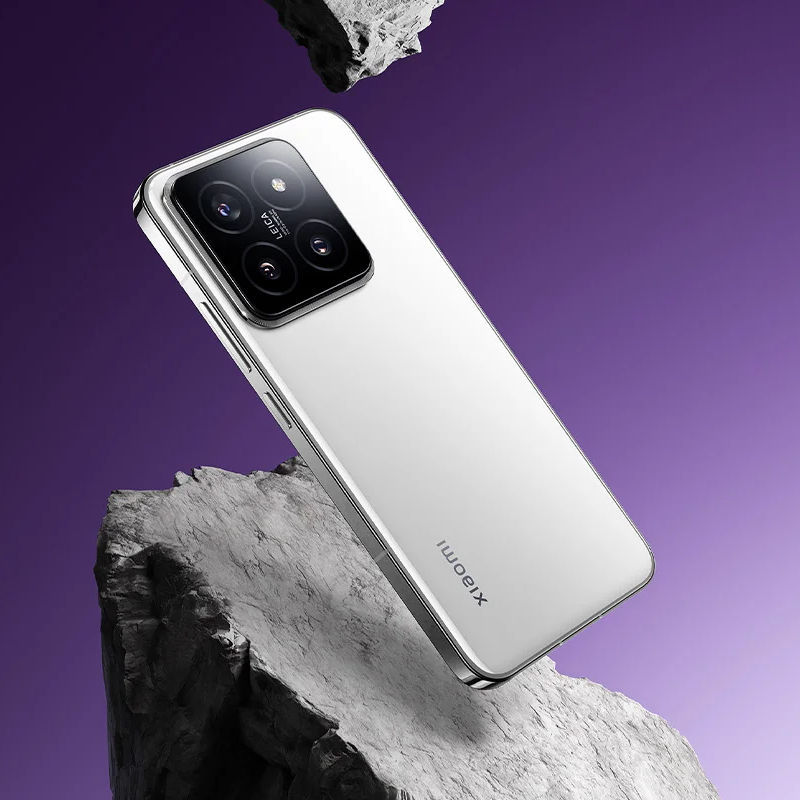The year 2024 is expected to mark a major milestone in smartphone evolution. Gone are the days when your smartphone was barely a tool that let you connect to the internet and take a couple of photos. With the advent of generative AI, we are stepping into the next phase of our digital lives, where our smartphone acts like a digital assistant. A majority of the upcoming phones in 2024 will require you to remap your usage habits.
Google already gave us a glimpse of this future with the Pixel 8 series. And, going by the busy launch schedule for 2024, the entire Android fraternity is expected to follow the trail. Samsung’s Galaxy S24 series is already rumoured to be playing big on generative AI using its Gauss AI model, and later in the year, we expect the South Korean conglomerate to distil it down to its foldable smartphones.
On the other hand, Apple is expected to make some noticeable leaps in hardware design with the iPhone 16 series despite trying to convince the world that its Vision Pro AR headset is the way forward.
And then there will be brands like Nothing and OnePlus that continue to serve people with what they seek the most — a meaty specifications sheet guaranteeing a practical, reliable and fun mobile experience.
Hence, with all these new smartphones headed towards us in 2024, we decided to list 20 of the most anticipated launches of the year from both the Apple and Android camps.
Best upcoming phones of 2024
Jump To / Table of Contents
- Redmi Note 13 Pro
- Samsung Galaxy S24 series
- OnePlus 12
- OnePlus 12R
- Vivo X100 series
- Xiaomi 14
- iPhone SE 4
- Nothing Phone 2a
- Samsung Galaxy A55
- Oppo Reno 11 series
- Vivo V31 series
- Poco X6 Pro 5G
- Motorola Razr 50 series
- Motorola Edge 50
- Nothing Phone (3)
- Google Pixel 8a
- Samsung Galaxy Z Flip 6
- Samsung Galaxy Z Fold 6
- iPhone 16 series
- Google Pixel 9 series
Redmi Note 13 Pro
Launching in: 4 January, 2024
The midrange smartphone segment is about to be all shaken up with Xiaomi’s upcoming Redmi Note 13 Pro Plus. Announced to a Chinese audience in late 2023, this smartphone is set to redefine expectations from this segment. Other than a fancy new design, the Redmi Note 13 Pro Plus will have an IP68 water and dust resistance, a curved edge 6.7-inch 120Hz OLED display with 1,800 nits of peak brightness, a 200-megapixel main rear camera, a 5,000mAh battery and a 120W wired fast charging. The phone is based on the MediaTek Dimensity 7200 Ultra midrange chipset.
(Image: Courtesy Xiaomi)
Samsung Galaxy S24 series
Launching in: January 2024
The successor to the beautiful Galaxy S23 series is headed towards us sooner than expected. Rumours predict an early January launch of Samsung’s flagship Galaxy S24 series and based on the leaks, it seems that Samsung fanboys are in for a treat.
The standard Galaxy S24 and Galaxy S24 Plus will look largely similar to the S23, save for the minor bezel reductions and the iPhone 15 Pro-inspired flat sides. While the Galaxy S24 will get a slightly larger 6.2-inch display and a 4,000mAh battery, the new bits on the Galaxy S24 Plus include a larger 6.7-inch Quad HD+ display, 4,900mAh battery and 12GB RAM.
The Galaxy S24 Ultra, on the other hand, is expected to ditch its curved edge display entirely, settling for a flat 6.8-inch Quad HD+ 120Hz refresh rate AMOLED display, a 5,000mAh battery and a new 50-megapixel 5x optical zoom camera replacing the popular 10x zoom camera. The phone will feature a Titanium build to enhance the body’s strength while reducing overall weight, just like the iPhone 15 Pro. The S Pen stylus and the iconic rear camera design from the Galaxy S23 Ultra will stay on the S24 Ultra.
Depending on the region, Samsung could use either the Snapdragon 8 Gen 3 or a new Exynos 2400 chipset for all the models. Samsung’s Gauss AI is also expected to be the star feature of the S24 series.
(Image: Courtesy Onleaks/MySmartPrice)
OnePlus 12
Launching in: January 2024
The OnePlus 12 has already gone on sale in China and by the time January arrives, it will be available in global markets, too. The phone is essentially an improved version of the OnePlus 11, featuring the new Snapdragon 8 Gen 3 chipset, a revamped triple rear camera system featuring a 50-megapixel Sony LYT 808 sensor, a 5,000mAh battery that accompanies 100W wired and 50W wireless charging and a 6.7-inch Quad HD+ resolution curved edge AMOLED display with 120Hz refresh rate. Despite featuring the same design as the OnePlus 11, the OnePlus 12 amplifies minor design details to make it look exquisite.
(Image: Courtesy OnePlus)
OnePlus 12R
Launching in: January 2024
Launching alongside the OnePlus 12 will be its more affordable sibling, the OnePlus 12R. Rumoured to be a rebranded version of the OnePlus Ace 2 Pro from China, this phone will take over from the ageing OnePlus 11R.
Some of its key specifications include the Snapdragon 8 Gen 2 chipset, a 50-megapixel Sony IMX890 sensor for the main camera, a 6.7-inch 120Hz AMOLED display with curved edges, a 5,000mAh battery and 120W wired fast charging. The OnePlus 12R is likely to be limited to India’s highly competitive flagship killer segment.
(Image: Courtesy OnePlus)
Vivo X100 series
Launching in: January 2024
The Vivo X100 series is coming to the global market as Vivo’s premium offering for photography enthusiasts. In a sea of premium offerings with the Snapdragon 8 Gen 3, Vivo’s flagship phones will feature MediaTek’s Dimensity 9300 chipset that offers equally good performance and power efficiency.
Armed with new camera systems and Zeiss’ T* coating, the X100 and X100 Pro are expected to dominate the smartphone camera segment. The X100 features a 5,000mAh battery and 120W wired charging solution whereas the X100 Pro gets a larger 5,400mAh battery with 100Wwired charging and 50W wireless charging.
(Image: Courtesy Vivo)
Xiaomi 14
Launch expected: February/March 2024
The Xiaomi 14 will be Xiaomi’s flagship offering for the world, providing the opportunity to once again play with its Leica-tuned camera system featuring a triple 50-megapixel rear camera system. The phone is based on the Snapdragon 8 Gen 3 chipset and features a 6.3-inch 1200p resolution OLED display with 120Hz refresh rate and a peak brightness of 3,000 nits. A 4,600mAh battery will keep the lights on and buyers will get a 90W wired fast charger to fill up its juice. It will also get a 50W wireless charging solution and a 10W reverse wireless charging feature.
Sadly, the better-equipped Xiaomi 14 Pro is rumoured to be restricted to the Chinese market.
(Image: Courtesy Xiaomi)
iPhone SE 4
Launch expected: March 2024
Amid all the high-profile launches in Q1 2024, Apple is expected to mark its return to the midrange segment with a brand-new iPhone SE 4. Rumours have talked about this entry-level iPhone being based on the iPhone 14, albeit with a few changes. It will likely have the body of the iPhone 14 as well as its 6.1-inch OLED 60Hz display featuring the old-school notch to hold the True Depth camera system. Apple could give it the A16 Bionic chip to offer better performance. A 3,279mAh battery will give the new iPhone SE longer stamina and the EU-mandated USB-C charging port will make it compatible with all universally available Type-C chargers.
However, to cut costs, Apple could likely feature a single 12-megapixel rear camera, similar to the current iPhone SE. Apple is also expected to ditch the Face ID verification in favour of a power-key mounted Touch ID system, just like the iPad Air’s Touch ID implementation.
(Image: Courtesy AB via Unsplash)
Nothing Phone 2a
Expected launch: February/March 2024
Nothing is expected to diversify into a two-model strategy with the Phone 2a in early 2024. Replacing the ageing Phone (1), the Phone 2a is expected to challenge midrange Android smartphones.
The early leaks have suggested that the Phone 2a will be based on the MediaTek Dimensity 7200 chipset, a midrange chip that balances performance and power efficiency. It will feature a 6.7-inch 120Hz OLED display, a dual 50-megapixel rear camera system, 8GB RAM and 128GB storage as standard. A fresh design pattern for the rear will differentiate it from the Phone (2) and that means we are going to see a new implementation of Glyph lights.
The Nothing Phone 2a is expected to be unveiled at the MWC Barcelona in February.
(Image: Courtesy Nothing)
Samsung Galaxy A55
Expected launch: March 2024
The successor to the Samsung Galaxy A54, the Galaxy A55, is expected to be released within Q1 2024. As usual, Samsung’s most popular midrange phone will retain the familiar design of its predecessor, excluding the flat sides with a raised surface for the power and volume keys. Some of the early leaks have revealed a new Exynos 1480 chip featuring AMD RDNA 2-based Xclipse 530 GPU, a 6.5-inch 120Hz OLED display and a 50-megapixel main rear camera.
(Image: Courtesy Onleaks / MySmartPrice)
Oppo Reno 11 series
Expected launch: April 2024
The Oppo Reno 11 series is expected to make its global debut in early 2024, replacing the Reno 10 series. The Chinese variant of the Reno 11 Pro is based on the Snapdragon 8+ Gen 1 chip and features a 6.7-inch 120Hz 1240p OLED display, a 50-megapixel Sony IMX890 main camera, a 4,700mAh battery with 80W wired charging and a vastly modified design with new colour gradients.
The Oppo Reno 11, on the other hand, uses a humble Dimensity 8200 chipset. As part of the cost-cutting, it settles for a 6.7-inch 1080p OLED display with curved edges, a 50-megapixel Sony LYT600 main camera, a 4,800mAh battery and a slower 67W wired fast charging.
(Image: Courtesy Oppo)
Vivo V31 series
Expected launch: Mid-2024
The Vivo V series spawns a new model every six months and given that the V29 series has been here for some time, we are now awaiting the Vivo V31 series. Expected to be based on the recently launched S18 series in China, the star feature on the standard and Pro models is a new square-shaped ambient LED light for the rear cameras.
The V31 Pro, expected to be based on the Vivo S18 Pro, could feature the mighty MediaTek Dimensity 9200+ chipset, a 6,7-inch 120Hz OLED display, a 5,000mAh battery, an 80W wired changing solution and triple rear camera system consisting of a 50-megapixel main sensor, another 50-megapixel ultrawide shooter and a 12-megapixel telephoto shooter with 2x zoom.
The standard Vivo V31, expected to be based on the Vivo S18, will be based on the Snapdragon 7 Gen 3 chipset and a larger 6.8-inch display.
(Image: Courtesy Vivo)
Poco X6 Pro 5G
Launch expected: Early 2024
The Poco X6 Pro 5G is expected to break cover in early 2024 and unsurprisingly, it is rumoured to be based on the Redmi K70E, a toned-down variant of the Redmi K70. That means the Poco X6 Pro could feature the MediaTek Dimensity 8300 Ultra chipset, a 6.67-inch 120Hz 1220p resolution OLED display, a 64-megapixel main rear camera, a 5,500mAh battery and a 90W wired charging solution.
Although the Redmi version boots Xiaomi’s new HyperOS based on Android 14, you can expect Poco to launch it with a reskinned MIUI interface. For those who are planning to buy an affordable gaming smartphone, you should keep an eye out for this one.
(Image: Courtesy Xiaomi)
Motorola Razr 50 series
Launch expected: Mid-2024
The Motorola Razr 40 Ultra presented flip phone fans with an interesting alternative to the Samsung Galaxy Z Flip 4 and Galaxy Z Flip 5 in 2023. Going into 2024, we expect Motorola to come up with a successor that outdoes the present model with a faster chipset, better cameras and unique styling. Although details on the Razr 50 series are scarce at the moment, you can expect Motorola to make some announcements at the Mobile World Congress MWC Barcelona in February 2024.
We expect Motorola to surprise us by equipping the Razr 50 Ultra with the latest Snapdragon 8 Gen 3 or MediaTek Dimensity 9300 flagship chipset, advanced 50-megapixel main cameras, a bigger capacity battery and faster wired charging. Plus, we won’t mind if Motorola releases it in the Peach Fuzz, which is the Pantone colour of the year for 2024.
(Image: Courtesy Motorola)
Motorola Edge 50
Launch expected: Mid-2024
The Motorola Edge 40 has been one of the best value-for-money midrange smartphones to buy, offering a hearty combination of performance, features and practicality. With the Edge 50, we expect Motorola to up its game by opting for a MediaTek Dimensity 9200+ chipset, a 144Hz refresh rate OLED display, a 50-megapixel main rear camera and a 5,000mAh battery.
Given the successful partnership with Pantone, you can expect the Edge 50 to be draped in Peach Fuzz, which is Pantone’s colour of the year for 2024. Motorola could also work wonders with the software by offering a feature-rich Android experience. What remains to be seen is whether the Lenovo-owned company can get improve its camera tuning in 2024.
(Image: Courtesy Motorola)
Nothing Phone (3)
Launch expected: Mid-2024
The Nothing Phone (2) marked a step up in terms of raw performance while maintaining the aesthetics and the basic feature set from the Phone (1). This year, we expect Nothing to introduce an all-new design for the Phone (3) along with several performance upgrades. Going by the Phone 2a’s leaks, it seems that Nothing is interested in reducing the Glyph light elements on its future models and we won’t be surprised to see the trend continue on the Phone (3).
Carl Pei’s team could also push the Phone 3 as a top-tier flagship, featuring a Snapdragon 8 Gen 3 chipset, an LTPO 120Hz OLED display, a big 5,000mAh battery and support for fast wired charging. Nothing’s strength always lies in its software design and with the Phone (3), you can expect the company to modify its Nothing OS even further with custom widgets and fonts.
(Image: Courtesy Nothing)
Google Pixel 8a
Launch expected: May 2024
Google hit it out of the park with the Pixel 8 series and its inclusion of generative AI in the bigger picture. Come summer of 2024, Google is likely to bring the same experience to the masses with the Pixel 8a.
Early leaks have revealed that the Pixel 8a would look a lot like the Pixel 8, borrowing its curvy corners and a chic candybar form factor. The phone could offer an identical OLED display with a slower refresh rate of 90Hz, the Tensor G3 chipset, a 4500mAh battery and support for 15W wireless charging.
Google could also equip it with a 64-megapixel main camera and a 12-megapixel ultrawide camera. The Tensor G3 could also allow the tech giant to implement some of the fancy AI features like Magic Editor, Audio Magic Eraser and more.
(Image: Courtesy Onleaks / Smartprix)
Samsung Galaxy Z Flip 6
Expected launch: August 2024
The Galaxy Z Flip 5 marked a tremendous improvement over its predecessors with a large practical cover display and a lightweight build. With the Galaxy Z Flip 6, rumours suggest that Samsung could trim down the bezels of the folding display and make noticeable changes to the folder-shaped cover display.
The phone could use the latest Snapdragon 8 Gen 3 chipset for improved performance and power efficiency. We also expect Samsung to ditch its dated dual 12-megapixel cameras in favour of a modern setup featuring a 50-megapixel main camera.
(Image: Courtesy Augustman)
Samsung Galaxy Z Fold 6
Launch expected: August 2024
The Galaxy Z Fold 5 was essentially a mild refinement of a two-year-old design that debuted with the Galaxy Z Fold 3. With competition rising in the foldable phone segment, Samsung is finally rumoured to go for a different aspect ratio on the Galaxy Z Fold 6.
Samsung could bring in a wider cover display that will be comparable in useable space with the Galaxy S24 flagship. Additionally, it could further reduce the weight of the device while overhauling the rear camera system and upgrading the chipset to the latest Snapdragon 8 Gen 3. We also expect Samsung to figure out a way to integrate the S Pen stylus within the phone’s chassis by taking a leaf out of the Galaxy S23 Ultra’s design.
(Image: Courtesy Augustman)
iPhone 16 series
Launch expected: September 2024
Apple usually reserves September for its annual iPhone announcements and this year, it will most likely be dropping the iPhone 16 series. Rumours of the iPhone 16 have been developing soon after the iPhone 15 reached the stores a few months ago.
The standard iPhone 16 and iPhone 16 Plus are expected to get a new 3nm A18 chip, capacitive volume and power keys, a dedicated camera shutter key, some refinements to the camera hardware, a fresher rear design and the same 60Hz OLED display.
The iPhone 16 Pro and iPhone 16 Pro Max are expected to get a beefier A18 Pro chip, upgraded camera hardware, capacitive touch keys on the sides and under-display Face ID sensors.
(Image: Courtesy Apple)
Google Pixel 9 series
Launch expected: October 2024
Last but not least, we have Google’s Pixel 9 series. The Pixel 9 lineup will take off from where the Pixel 8’s AI madness concluded, thereby giving the Pixel lineup a distinctive edge.
Other than a new Tensor G4 chipset and possibly a funky new design, Google could trickle down more magical generative AI features to the standard Pixel 9 this year. The Pixel 9 Pro could also bring in new AI-based features and tools from Google’s labs that could give it a competitive edge over its rivals Samsung and Apple.
The phone is also expected to debut the first public release of Android 15, which itself is yet to enter the testing phase.
(Image: Courtesy Augustman)
(Hero and Featured Image: Courtesy Edited by Augustman)
This story first appeared on Augustman India.
Frequently Asked Questions (FAQs)
– Which is the best upcoming Android phone in 2024?
The Samsung Galaxy S24 Ultra could be one of the best upcoming Android phones of 2024, relying on top-notch specs and advanced AI features.
































